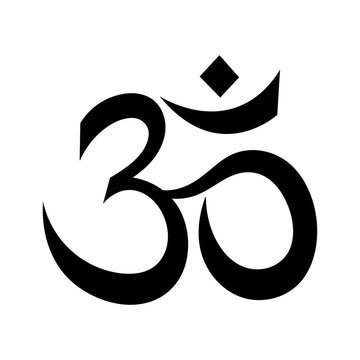The sound of OM
Image credit: Adobe
Many yoga teachers - myself included sometimes - begin and end the practice with the sound of Om. Have you ever wondered why and what it means? Mandukya Upanishad, one of the ancient Hindu sacred texts, explains that “Om is what has been, what is and what shall be.” The sound of Om consists of the three vibrations transitioning into each other, A-U-M and the silence around them signifying turiya, or pure consciousness. AUM represents three states of consciousness: waking, dreaming, and dreamless deep sleep, and also the beginning, the sustaining, and the end of any and all endeavors. Turiya is the unchanging constant background that underlies and pervades them.
Mandukaya Upanishad defines Om in a strikingly universal way:
"OM represents everything - the beginning, the middle and the end, the past, the present and the future. It encompasses all sounds - mankind, nature, machinery... it is the hum of the earth."
Therefore, Om is often described as “the unstuck sound” or “the sound of the universe” - a comforting vibrational hum that is always there. In my yoga studies I’ve been thinking of Om primarily in a spiritual sense, but often the spiritual and the scientific intersect in unexpected ways.
Recently I’ve ready a book by Marcia Bartusiak, Einstein’s Unfinished Symphony, tracing the history of scientific efforts to detect the gravitational waves predicted by Albert Einstein's theory of general relativity. Unlike electromagnetic waves, which travel through space and time, gravitational waves are ripples in the spacetime itself that spread at the speed of light, filling the universe. They are generated by accelerated masses induced by phenomena like a pair of black holes rotating around each other, or cosmic events such as supernovae and the very formation of the universe shortly after the Big Bang.
Bartusiak beautifully describes these primordial gravitational waves that underlie all the other gravitational “sounds” of the Cosmos - planetary whirls, whooshing comets, rotating pulsars:
“And beneath the chips, pops, and beats emanating from the gravity wave sky, there could be an underlying murmur - constant, unvarying, and as delicate as a whisper. The buzz would be the faint reverberation of our universe’s creation, its remnant thunder echoing down the passages of time.”
Does that sound familiar? Not sure about you, but this passage made me think of Om right away. While what we sense and experience in the spiritual realm is not necessarily a suitable subject for science, what a wonderful parallel it is! Amazingly, after decades of research, gravitational waves were finally first detected in 2015 as they passed through the Earth, one hundred years after Einstein’s prediction. The scientists who discovered them - Rainer Weiss, Kip Thorne, and Barry Barish - were awarded the Nobel Prize in Physics a year later.
So next time your teacher intones Om in a yoga class, perhaps take this broader view and join in with the cosmic vibration. Whether from the perspective of spirituality or physics, chanting AUM is an acknowledgement of the connection with something greater than oneself, a larger unifying Self that connects all energy and matter through space and time. If we stay with it, a peaceful glimpse of turiya awaits…
